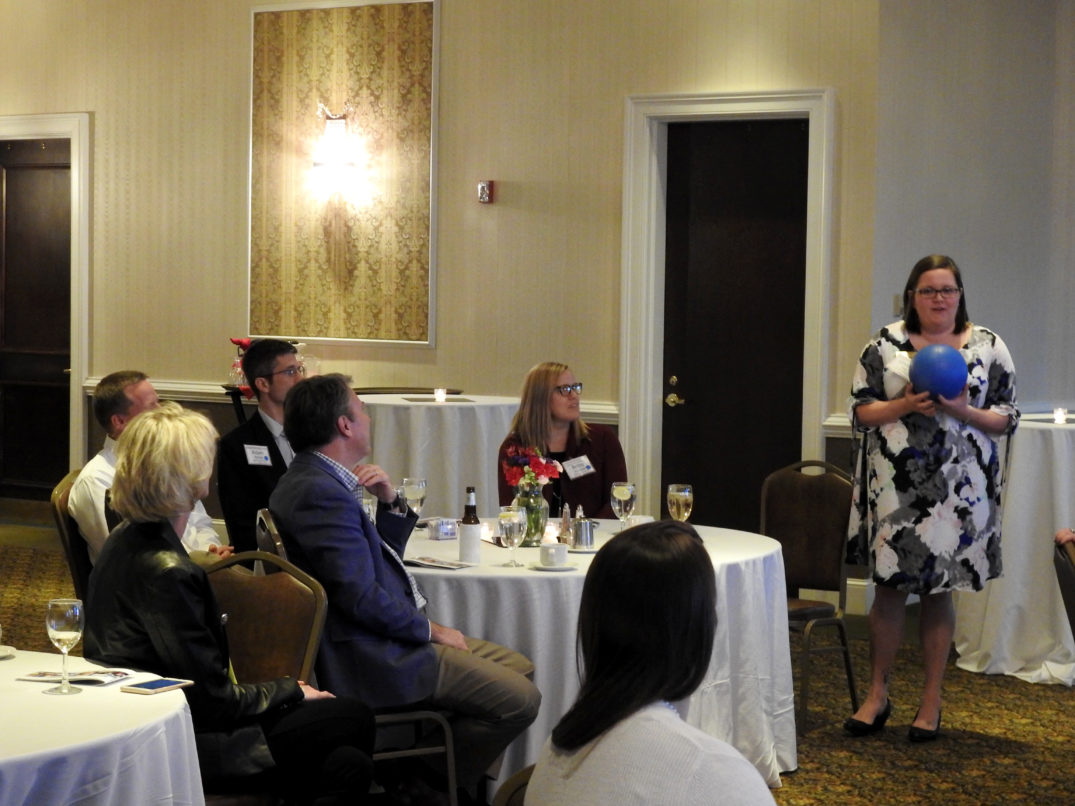
Part 2 of our 6-part series
<<Part 1: Beginnings
Though they were excited to participate, the event’s Fellows say they had virtually no idea what to expect from the Academy. Most say they came extremely hopeful for what collaborations might produce, but that they were initially skeptical.
“There’s a level of cynicism that you enter with, listening to something like this—basically saying, ‘Okay, this sounds cool, but it also sounds a little showy,’” admits Freebird McKinney, the 2018 North Carolina Teacher of the Year and one of the event’s Fellows.
“I had no idea what it was going to be like, because I had never even heard about a group coming together like this,” explains Lisa Goodwin, the 2017 North Carolina Teacher of the Year. “I was curious about exactly what the format was going to look like and what they wanted from us.”
Breaking the Ice
Moseley Architects’ formula includes an evening-before event that brings together and introduces all of the Academy’s Fellows, architects, co-sponsors and other participants over dinner and drinks. In North Carolina, the evening began with introductory remarks by Roberson, after which Glen Meeks of Meeks Consulting (whose specialty includes tackling educational challenges with the latest technologies) delivered an overview of various educational paradigms, spanning from the 1940s onward.
The evening was “transformative,” several Fellows commented.
“We had some drinks, then for a good hour and a half, we just shared who we are, what our roles were, and what our hopes were for the event,” says McKinney.
Idea Mining
Following an ice-breaker the evening before, each Academy starts with what Moseley Architects refers to as “idea mining”—something that started with the company more than a decade ago, as a practice for kicking off collaborative design sessions.
“What we do is, we bring together a large group of people from different backgrounds, then we do what we call idea mining. They talk about opportunities and any concerns they might have, maybe about the process.”
Billy Riggs, K-12 Managing Principal with Moseley Architects
Step 1: Anything Goes
Idea mining begins with around half a dozen open-ended questions, meant to solicit one- to two-word responses representing concepts that Fellows see as the most important elements for an ideal school. The only rule? There are no unintelligent answers. Words and phrases are placed on index cards and pinned to a display in front of the group for further consideration.
Step 2: “Panning for Gold”
From there, participants are given stickers—colored dots that they’re asked to systematically place onto the words they feel represent what’s most important. They’re also given a “Super Dot” that carries additional clout in the voting process.
Step 3: Philosophical Hashtag
Once Fellows have worked as a group, casting their votes, the words they tag as most important are assembled into a list, which is also used to create a vision “word cloud,” or info-graphic.
Step 4: Assemble a Theme
Once key ideas are established, one or more individuals are asked to take them and organize them into a centralized theme for the event—a vision statement to be used as the philosophical backbone of the Academy.
“It really was powerful. And at one point I said something like, ‘More love per square foot,’” explains Lisa Goodwin, 2017 North Carolina Teacher of the Year.
In an instant, North Carolina teachers found their theme and hashtag:
We envision a school that is a multi-functional, collaborative community of engaged creators designed for the whole child.
#LovePerSquareFoot
It was the first time he’d ever heard the word “love” used as the philosophical driver for a design project, managing principal Bill Laughlin said. But Fellows had zeroed in on a basis for school design that centered on a “whole child” concept—one that includes a holistic approach to schooling that’s designed to fulfill the full physical and mental needs of children alongside education. To be at its best, education must integrate students, teachers and schools with their communities, making schools and school systems an integral and valuable part of students’ families and local societies.
Next, it was time to nail down the physical characteristics of their vision.